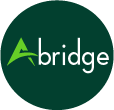Introduction
In today's fast-changing business landscape, growth doesn't happen by chance, it happens by design. The companies that thrive are those that can consistently attract new opportunities and turn them into paying customers. Without a steady pipeline of potential clients, even the best products or services struggle to survive. This is where lead generation plays a critical role. At its core, lead generation is about finding people or businesses who are genuinely interested in what you offer, capturing their attention, and guiding them through a journey that eventually leads to a sale.
It bridges the gap between marketing and sales, making sure your efforts are focused on the right audience instead of wasting time and resources on uninterested prospects.
For small businesses, lead generation means building awareness and credibility in a crowded market. For large enterprises, it means scaling growth and maintaining a competitive edge. In every case, the principle is the same: no leads = no sales = no growth.
At Abridge, we've seen firsthand how powerful lead generation can be. We specialize in delivering 100% verified, high-quality leads tailored to each client's industry. But before diving into strategies and tools, let's take a step back and understand the basics of lead generation; what it is, why it matters, and how it works.
What is Lead Generation?
Lead generation is the process of identifying, attracting, and capturing the interest of potential customers (called leads) for your products or services. Instead of wasting time and resources chasing random people, businesses use lead generation strategies to target prospects who are most likely to convert into paying customers.
A lead can be anyone who shows interest in your business; for example, by visiting your website, downloading a free resource, signing up for a newsletter, or filling out a contact form. These small actions signal that they may need your product or service in the future.
Example:
Suppose you run a digital marketing agency. Instead of cold-calling 1,000 random people, you focus on attracting business owners who are already looking for marketing help. By creating a free eBook, running targeted ads, or using LinkedIn, you build a list of qualified leads who are genuinely interested, making it easier to nurture them into long-term clients.
Why is Lead Generation Important?
Lead generation is not just about finding contacts; it's about building a system that consistently brings the right customers to your business. Here's why it's essential:
- Saves Time & Resources: By targeting only qualified prospects, you reduce wasted effort on people who will never buy.
- Boosts Sales & Revenue: More interested leads mean higher conversion rates, which directly impacts revenue.
- Builds Trust & Relationships: Nurturing leads with valuable content and consistent engagement builds credibility long before a sale is made.
- Drives Sustainable Growth: A steady stream of qualified leads ensures long-term business stability and predictable growth.
Types of Lead Generation
Lead generation can be broadly divided into two main categories: Inbound and Outbound. Successful businesses often use a combination of both.
1. Inbound Lead Generation
Inbound focuses on attracting customers naturally by providing value. You create content and resources that make them come to you.
2. Outbound Lead Generation
Outbound is about proactively reaching out to potential customers. It's more direct and often faster but requires careful targeting.
The Lead Generation Process (Step-by-Step)
- Identify Your Target Audience: Define who you want to attract by creating a detailed buyer persona.
- Attract Visitors: Use channels like content marketing, SEO, and paid ads to get in front of your audience.
- Capture Leads: Turn visitors into prospects using landing pages, forms, and valuable lead magnets.
- Nurture Leads: Build trust with those not ready to buy immediately through email campaigns and personalized follow-ups.
- Convert to Customers: Make the offer at the right time through sales calls, demos, and special offers.
Common Lead Generation Strategies in 2025
With markets getting more competitive, businesses need smarter strategies. Here are some of the most effective methods today:
- Content Marketing: Educate and attract through value with SEO-driven blogs, guides, and case studies.
- LinkedIn Outreach: Connect directly with decision-makers through personalized, non-spammy outreach.
- Email Marketing: Nurture leads into customers with automated sequences, personalized offers, and newsletters.
- Paid Ads (Google, Facebook, LinkedIn, TikTok): Reach hyper-targeted audiences quickly with data-driven campaigns.
- Webinars & Virtual Events: Educate and build trust at scale by showcasing expertise in real-time.
Lead Generation Mistakes to Avoid
- Targeting the Wrong Audience: Wastes time and resources. Create detailed buyer personas first.
- Using Outdated Contact Lists: Leads to bounced emails and a damaged reputation. Keep your data clean.
- Focusing on Quantity, Not Quality: Low-quality leads rarely convert. Focus on prospects who match your ideal customer profile.
- Not Following Up with Warm Leads: A missed opportunity. Use automated follow-ups to stay engaged.
How Abridge Can Help You
We specialize in high-quality B2B lead generation designed to connect your business with decision-makers who are genuinely interested in your products or services.
Contact us now for a consultation!

